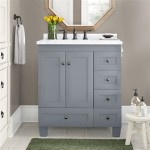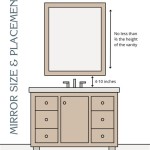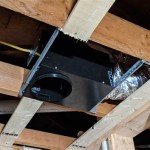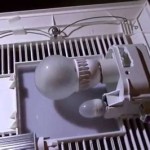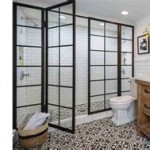How To Clean Mildew Off Painted Bathroom Walls
Mildew, a common type of fungus, thrives in damp and poorly ventilated environments. Bathrooms, with their inherent moisture levels, are prime breeding grounds for mildew. When left unchecked, mildew not only presents an unsightly appearance on painted bathroom walls but can also contribute to unpleasant odors and potential health concerns. Therefore, understanding how to effectively clean mildew off painted surfaces in the bathroom is crucial for maintaining a clean, healthy, and aesthetically pleasing home environment. This article provides a comprehensive guide to the effective removal of mildew from painted bathroom walls, detailing the necessary preparations, appropriate cleaning solutions, and preventative measures to inhibit future growth.
Before embarking on the cleaning process, it is imperative to understand the distinction between mildew and mold. While often used interchangeably, these fungi differ in their appearance and severity. Mildew typically appears as a flat, powdery, or cottony growth, often white, gray, or yellow in color. Mold, on the other hand, can present a wider range of colors and textures and tends to penetrate deeper into surfaces. While this article focuses on mildew removal, it is important to note that extensive or deeply ingrained mold infestations may require professional remediation. If the discoloration is significant, accompanied by strong, musty odors, or presents with unusual textures beyond a surface growth, consulting a mold remediation specialist is strongly recommended.
Preparation and Safety Precautions
Prior to commencing the cleaning process, thorough preparation is essential to ensure both personal safety and the effective removal of mildew. This preparation involves gathering the necessary cleaning supplies and implementing appropriate safety measures to protect oneself from potential irritants and the spread of fungal spores.
The following cleaning supplies are generally required for mildew removal:
- Cleaning Solution: A suitable cleaning solution is paramount. Several options are viable, including diluted bleach, vinegar, baking soda paste, and commercially available mildew removers. The choice of cleaning solution will depend on the severity of the mildew growth and personal preference, but it is crucial to test any solution on an inconspicuous area of the wall first to ensure it does not damage the paint.
- Spray Bottle: A spray bottle is necessary for applying the cleaning solution evenly onto the affected areas. A bottle with an adjustable nozzle allows for targeted application and prevents oversaturation of the wall surface.
- Scrub Brush or Sponge: A soft-bristled scrub brush or sponge is needed to gently agitate the mildew and remove it from the painted surface. Avoid using abrasive materials that could scratch or damage the paint. Microfiber cloths can also be effective for wiping away loosened mildew.
- Clean Cloths or Rags: Clean cloths or rags are essential for wiping down the walls after cleaning and for drying the surfaces to prevent further moisture buildup.
- Water: Clean water is needed for rinsing the walls and diluting cleaning solutions as necessary.
- Gloves: Wearing gloves is crucial to protect the skin from the irritating effects of cleaning solutions and to prevent direct contact with mildew spores.
- Eye Protection: Eye protection, such as goggles or safety glasses, is vital to prevent splashes of cleaning solution from entering the eyes.
- Mask: A face mask, preferably an N95 respirator, is recommended to prevent the inhalation of mildew spores and cleaning solution fumes.
- Ventilation: Adequate ventilation is paramount. Open windows and doors to ensure proper airflow during the cleaning process. If natural ventilation is insufficient, consider using a fan to circulate air.
Before cleaning, remove any items from the bathroom that might be damaged by the cleaning process or that could obstruct access to the affected wall surfaces. This may include towels, toiletries, and decorative items. Cover the floor beneath the wall with a drop cloth or old towels to protect it from splashes and drips. Once the supplies are gathered and the area is prepared, the cleaning process can commence.
Cleaning Solutions and Application Techniques
Selecting the appropriate cleaning solution and employing the correct application techniques are critical for effective mildew removal from painted bathroom walls. Several cleaning solutions are commonly used, each with its own advantages and disadvantages. It is crucial to carefully consider these factors and choose the solution that is most suitable for the specific situation.
Commonly used cleaning solutions include:
- Diluted Bleach Solution: A diluted bleach solution (typically 1 part bleach to 10 parts water) is a potent disinfectant and mildew remover. However, bleach can be harsh and may discolor or damage certain paint finishes. It is essential to test the solution on an inconspicuous area first to ensure compatibility. Additionally, bleach fumes can be irritating, so proper ventilation and the use of a mask are imperative.
- White Vinegar: White vinegar is a natural and less aggressive alternative to bleach. Its acidity helps to kill mildew spores without the harsh chemicals. Vinegar can be applied undiluted or diluted with water, depending on the severity of the mildew. While vinegar is generally safe, it is still advisable to test it on an inconspicuous area first.
- Baking Soda Paste: A paste made from baking soda and water can be an effective and gentle abrasive cleaner. Baking soda helps to absorb moisture and odors and can be particularly useful for removing mildew stains from porous surfaces. Apply the paste to the affected area, let it sit for a few minutes, and then scrub gently with a brush or sponge.
- Commercial Mildew Removers: Numerous commercially available mildew removers are specifically formulated for bathroom use. These products often contain a combination of detergents, disinfectants, and mildew inhibitors. Always follow the manufacturer's instructions carefully when using commercial mildew removers.
Regardless of the cleaning solution chosen, the following application techniques should be employed:
- Spray the cleaning solution onto the affected area of the wall, ensuring that the surface is evenly coated. Avoid oversaturating the wall, as excessive moisture can exacerbate the problem.
- Allow the cleaning solution to sit on the surface for a few minutes to allow it to penetrate the mildew and loosen its grip. The specific dwell time will vary depending on the cleaning solution used, so refer to the product instructions or research recommended times.
- Gently scrub the affected area with a soft-bristled brush or sponge. Avoid using excessive force, as this could damage the paint. Work in circular motions to dislodge the mildew and lift it from the surface.
- Rinse the wall with clean water to remove any remaining cleaning solution and dislodged mildew. Use a clean cloth or sponge to wipe down the surface thoroughly.
- Dry the wall with a clean, dry cloth or towel. Prompt drying is crucial to prevent further moisture buildup and inhibit the regrowth of mildew.
For stubborn mildew stains, repeat the cleaning process as needed. If the mildew persists despite repeated cleaning attempts, it may be necessary to consider repainting the affected area. Before repainting, ensure that the underlying surface is completely dry and free of any remaining mildew spores. Consider using a mildew-resistant paint to prevent future growth.
Prevention of Future Mildew Growth
Beyond the immediate removal of mildew, implementing preventative measures is paramount for inhibiting future growth and maintaining a mildew-free bathroom environment. Addressing the underlying causes of moisture buildup and promoting proper ventilation are key to preventing mildew from recurring.
Effective preventative measures include:
- Improve Ventilation: Adequate ventilation is crucial for removing moisture from the bathroom air. Ensure that the bathroom is equipped with a functioning exhaust fan and use it during and after showers or baths. If the bathroom lacks an exhaust fan, consider installing one. Open windows and doors to allow for natural airflow whenever possible.
- Reduce Humidity: Minimize moisture buildup by addressing potential sources of humidity. Repair any leaky faucets or pipes promptly. Wipe down wet surfaces, such as shower walls and countertops, after each use. Avoid leaving wet towels or bath mats lying on the floor.
- Clean Regularly: Regular cleaning helps to prevent the accumulation of mildew-supporting substances, such as soap scum and body oils. Clean the bathroom regularly, paying particular attention to areas prone to mildew growth, such as the shower, tub, and walls. Use a mildew-resistant bathroom cleaner to help inhibit growth.
- Use Mildew-Resistant Paint: When repainting the bathroom, consider using a mildew-resistant paint. These paints contain additives that inhibit the growth of mildew and other fungi. Mildew-resistant paints are a good investment for bathrooms that are prone to moisture buildup.
- Maintain Proper Air Circulation: Ensure that air can circulate freely around the bathroom. Avoid placing furniture or other items too close to the walls, as this can trap moisture and create a breeding ground for mildew.
- Consider a Dehumidifier: In particularly humid climates or bathrooms with poor ventilation, a dehumidifier can be used to reduce moisture levels in the air. Choose a dehumidifier that is appropriately sized for the bathroom and empty the water collection reservoir regularly.
By implementing these preventative measures, it is possible to significantly reduce the risk of future mildew growth in the bathroom and maintain a clean, healthy, and aesthetically pleasing environment. Consistent attention to ventilation, humidity control, and regular cleaning are essential for long-term mildew prevention. Addressing the underlying causes of moisture buildup is always more effective than simply treating the symptoms.

How To Remove Mold From Walls True Value

How To Remove Mould Before Painting Bella Bathrooms Blog

How To Remove Mould From Painted Walls Mathiou Services

How To Remove Mould Before Painting Bella Bathrooms Blog

How To Clean Mould Off Walls Very Effective And Safe Way Kill Prevent Express Co

Removing Mould From Walls How To Clean

The Ultimate Guide On How To Clean And Get Rid Of Mold Pro Housekeepers

How To Get Rid Of Mold On Bathroom Walls Family Handyman

Diy Tips To Remove Mouldy Paint In Your Bathroom Baker Smith Ltd

Remove Mold From Walls Expert Tips And Diy Sprays A Cleaning Explains
Related Posts
